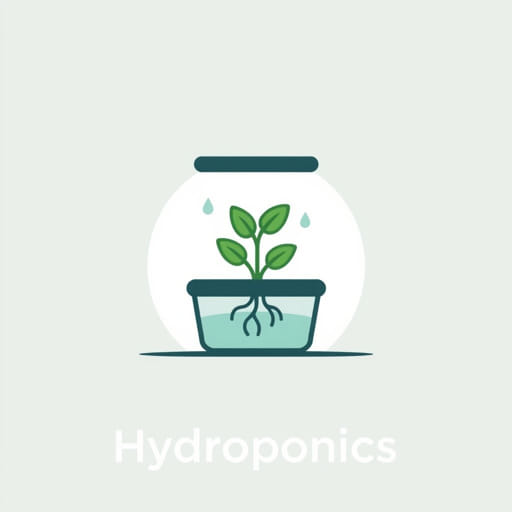Advantages And Disadvantages Of Hydroponics
Hydroponics is a modern method of growing plants without the use of soil, relying instead on nutrient-rich water solutions. This innovative agricultural technique has gained popularity due to its potential to save space, reduce water usage, and enable year-round food production. As global food demand increases and arable land becomes more limited, hydroponics presents a compelling alternative to traditional farming methods. However, despite its many advantages, it also comes with several challenges and disadvantages that growers must consider carefully before adopting this system.
What Is Hydroponics?
Hydroponics is a system of cultivating plants by suspending their roots in a nutrient-enriched water solution rather than soil. This system can take many forms, such as deep water culture, nutrient film technique, aeroponics, or wick systems. It allows for precise control of nutrients, pH levels, and environmental conditions, often leading to faster and more efficient plant growth.
Advantages of Hydroponics
There are many benefits of hydroponics that make it attractive to commercial growers, hobbyists, and urban farmers. These advantages stem from the system’s ability to maximize efficiency and reduce reliance on natural resources.
1. Water Efficiency
One of the most significant advantages of hydroponics is its reduced water usage. Traditional agriculture often leads to water waste through runoff or evaporation. In hydroponic systems, water is recirculated, meaning less is needed to sustain plant growth.
- Up to 90% less water is used compared to soil farming.
- Closed-loop systems prevent unnecessary water loss.
2. Faster Plant Growth
Plants grown in hydroponic systems typically grow faster due to direct access to nutrients and optimal growing conditions. Without the need to search for nutrients in soil, plant roots can focus on development and productivity.
- Growth cycles are often 2550% shorter.
- Higher yields are achievable in shorter periods.
3. Space-Saving Design
Hydroponic systems are ideal for urban areas or places with limited space. Vertical farming and stackable hydroponic systems allow multiple layers of crops to be grown in compact areas.
- Perfect for rooftops, greenhouses, or indoor facilities.
- Efficient use of available area increases productivity per square meter.
4. Fewer Pests and Diseases
Without soil, many common pests and soil-borne diseases are eliminated. This leads to healthier plants and reduces the need for chemical pesticides.
- Lower risk of crop failure due to infestations.
- More organic and chemical-free growing environments.
5. Year-Round Production
Since hydroponic systems can be maintained indoors under controlled light, temperature, and humidity, they enable continuous cultivation regardless of season or climate.
- More predictable harvests and consistent supply.
- Useful in regions with harsh weather conditions.
6. Nutrient Control
Growers have full control over the type and amount of nutrients their plants receive. This allows for precise adjustments to maximize growth and health.
- No dependency on soil quality.
- Fewer imbalances and deficiencies when managed properly.
Disadvantages of Hydroponics
Despite the many benefits, hydroponic systems also have some drawbacks. These challenges can affect feasibility, especially for new growers or those with limited resources.
1. High Initial Setup Cost
Hydroponic systems require investment in equipment such as grow lights, pumps, containers, and nutrient solutions. The initial cost can be significantly higher than starting a soil-based garden.
- High capital costs for commercial operations.
- Longer time required to break even and generate profit.
2. Technical Knowledge Required
Managing a hydroponic system effectively requires a good understanding of plant biology, nutrient chemistry, and system mechanics. Mistakes can be costly and lead to plant damage or loss.
- Requires ongoing monitoring of pH, EC, and temperature.
- Not ideal for growers unfamiliar with the science of plant nutrition.
3. Risk of System Failures
Since plants rely entirely on the artificial system for water and nutrients, any malfunction such as a power outage or pump failure can quickly harm or kill plants.
- No water or nutrient buffer as in soil.
- Backup power and redundant systems are often necessary.
4. Limited Crop Variety
Hydroponics is best suited for fast-growing, high-yield crops like lettuce, herbs, and tomatoes. Root vegetables or large fruit-bearing plants may be more difficult to cultivate.
- May not support crops like potatoes or corn effectively.
- Smaller yields for certain plant types.
5. Ongoing Maintenance
Hydroponic systems require constant attention. Water levels, nutrient balances, and cleanliness must be monitored and adjusted frequently.
- Greater labor intensity than many expect.
- Potential for algae growth or salt buildup if not maintained.
6. Energy Consumption
Indoor hydroponic farms use artificial lighting, heating, and cooling systems. These can consume significant amounts of electricity, especially in large-scale setups.
- Environmental impact may be higher if not offset by renewable energy.
- Increased operational costs due to energy use.
Applications and Use Cases
Hydroponics is used in various contexts around the world:
- Urban farming: Rooftop and indoor farms in cities
- Disaster recovery: Food production in areas with soil degradation
- Space missions: NASA research for growing food in space
- Commercial greenhouses: Mass production for supermarkets
These examples demonstrate the flexibility and promise of hydroponic systems in both small and large-scale food production.
Hydroponics offers a revolutionary way to grow food efficiently and sustainably, especially in environments where soil-based agriculture is not viable. Its advantages such as water savings, faster growth, and year-round productivity make it an appealing option for the future of farming. However, challenges like high setup costs, technical complexity, and energy use should not be overlooked. For those willing to invest the time and resources, hydroponics can be a highly rewarding and productive method of cultivation. As technology advances, it’s likely that more innovations will address the current disadvantages, making hydroponics even more accessible and efficient in the years to come.
